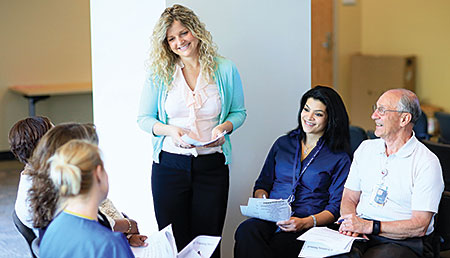One-on-One Support Helps Children Learn to Read

Rogerwene Gifford, an employee in the Anderson Center, works on literacy skills with a student.
Rogerwene Gifford always brings a healthy snack as a treat for the children she tutors − perhaps a banana or a bag of trail mix. She tells the kids it’s brain food.
Gifford, a Cincinnati Children’s employee, tutors twice a month, working one on one with children who need extra help with reading.
Her volunteer service supports a key goal of Cincinnati Children’s strategic plan: to help children in Cincinnati Public Schools achieve third-grade reading proficiency.
Why should a pediatric hospital be concerned about an academic issue?
Because there’s a powerful link between reading and healthy child development. Children who fall behind in reading are at increased risk for low self-esteem, truancy, dropping out of school, juvenile delinquency, substance abuse and teen pregnancy.
Helping children succeed in reading places them on the path to healthier, more productive lives.
One way Cincinnati Children’s is working to improve reading proficiency is by partnering with the Literacy Network to provide tutors to Rockdale Academy and South Avondale Elementary School.
We recruit volunteer tutors through our Employee Ambassador Program, which links employees with a wide range of community service projects.
As volunteers sign up to be tutors, the Ambassador Program schedules a training session provided by the Literacy Network. Since 2014, the Literacy Network has trained 100 hospital ambassadors to be tutors. Although our volunteers know how to read, we want to make sure that they also know how to teach a struggling child how to read.
Trainer Annie Schneider, director of external relations for the Literacy Network, introduces new tutors to key areas of reading instruction. Children who are having trouble reading are likely to be struggling with one or more of these areas.
Gifford says the training taught her “best practices on how to engage the child and gave me approaches, strategies and techniques I can apply.”
She finds it gratifying to help open up a child’s world through books. “I just love the fact that we have the support to do this,” Gifford says. “It’s wonderful.”




